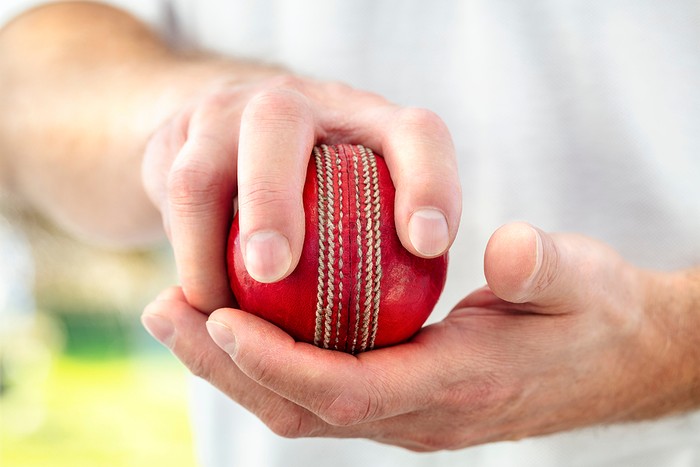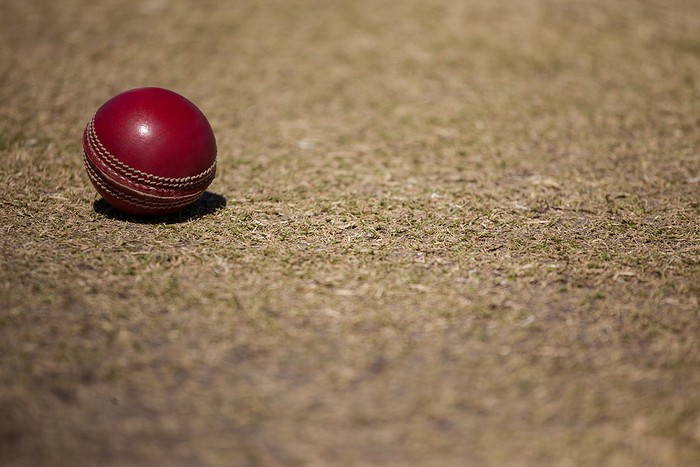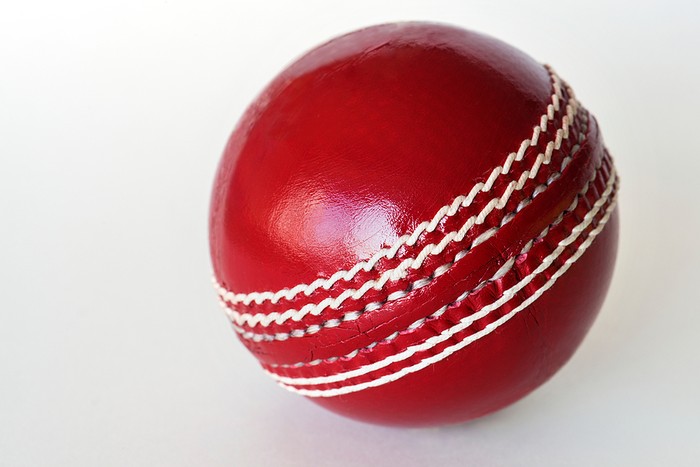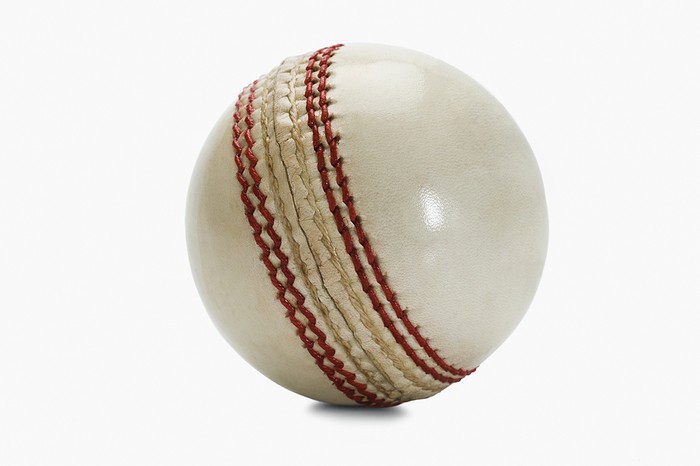 When it comes to the weather, most (outdoor) sports fall firmly into one of two camps. The first includes sports such as football, rugby and American football that will play on in all manner of conditions, usually unless visibility or the risk of lightning poses a threat to safety of the players, officials or spectators, or the pitch becomes so waterlogged, snowy or frozen that play is impossible or very dangerous.
When it comes to the weather, most (outdoor) sports fall firmly into one of two camps. The first includes sports such as football, rugby and American football that will play on in all manner of conditions, usually unless visibility or the risk of lightning poses a threat to safety of the players, officials or spectators, or the pitch becomes so waterlogged, snowy or frozen that play is impossible or very dangerous.
The other group of sports are rather less robust when it comes to the weather and will flee the field of play at the first sign of drizzle. We’re talking here of sports such as tennis and, of course, cricket.
There is a third set of sports that can tolerate some precipitation (such as Formula 1 and golf) but which don’t take kindly to extreme weather conditions. But when it comes to cricket, it really doesn’t take many droplets of rain to fall upon the umpire’s hat for proceedings to be called to a halt. So, are cricket players just much less hardy than footballers or rugby players (well, they are, but that’s another story)? Or are there some very good reasons for play being stopped when the heavens open? In this article, we’ll tell you all you need to know about the whys and wherefores of rain stopping play in cricket.
Why Does Rain Stop Play?
For cricket fans, it can be frustrating indeed when the match you are watching is brought to an abrupt halt because a few drops of rain have begun falling. The level of frustration can be heightened further if a match is coming towards its climax, and even more so again if you happen to have a bet on the outcome! But when the umpires send the players to the pavilion and call on the covers, they are not just trying to spoil people’s fun. There are two very good reasons that cricket is not allowed to continue in the rain.
Safety Issues

The most pertinent issue with playing cricket in the rain relates to player safety. Anyone who has ever played cricket will be all too aware of how hard cricket balls are. And anyone who has faced even a fast-medium bowler will be aware of how difficult it can be to pick out a ball in perfect weather conditions. So imagine the scenario when the rain has begun to fall and visibility is greatly reduced only for one of the top quicks to send a ball towards the batsman at speeds approaching 100 mph. As you can imagine, this could cause very serious injury to any batsman who is unable to see the ball and hence either hit it or get out of the way.
As stated in the The Laws of cricket, it is solely up to the umpires to decide whether play should be suspended and they should do so if they consider that “the conditions of ground, weather or light, or any other circumstances are either dangerous or unreasonable”. It goes on to say that conditions should be regarded as dangerous if “there is actual and foreseeable risk to the safety of any player or umpire”.
As well as issues of visibility for the batsman, bowling with a wet ball is also very difficult for the bowler, whose lack of control can make things even more dangerous for the batter. A beamer at your head at 95mph is not pleasant! In addition, a wet pitch becomes unpredictable, further adding to the danger as far as the batsman is concerned.
Lastly, if the wicket and wider pitch become wet, they will also become slippery. In order to preserve the quality of the wicket, cricketers, be they bowling, batting, or fielding, cannot wear the sort of studs that offer football or rugby players grip in wet and muddy conditions. In cricket boots, equipped with spikes, a wet pitch can become dangerously slippery to all who play on it, meaning that when the heavens open, it is covers on.
Protecting The Pitch

As well as the abovementioned safety issues in relation to the pitch getting rained on (i.e. protecting the players), there is also the issue of needing to protect the pitch itself. This is because a pitch that has soaked up lots of rain could become unsuitable to play on, as judged by the umpires. This could be that the pitch is so wet that is restricts the ability of the batters to run between the wickets or, more likely, it will relate to the potential safety implications of a wet or waterlogged pitch.
In the case of Test matches, there is also the issue of pitch preservation. If, for instance, rain falls on the opening day of a five-day Test, there will be real urgency to get the covers on. If the pitch takes on too much water it could deteriorate sufficiently for it to be unplayable very rapidly, with the sort of unpredictable bounce that is just not conducive to modern Test cricket.
What Happens When Rain Stops Play?

We’ve talked about rain stopping play on the assumption that you know what it actually means. However, just in case you’re not fully aware, here we’ll outline the practicalities of what happens in such a scenario and also the implications for both the result of a rain-affected match and what happens if you’ve placed a bet on the match.
Rain can essentially affect a cricket match in one (or more) of four ways:
- Delayed start – If it’s raining before the match has even started, it will be delayed until such a time as the umpires deem the weather conditions and pitch to be suitable for play to commence.
- Interruption to play – If rain begins at some point after the match has commenced, play will be called to a halt and will not resume until the umpires agree the weather and pitch allow. The umpires will make “inspections as appropriate” to decide when conditions allow for play to be resumed.
- Match is abandoned/concludes early – If it rains and there is no realistic prospect of it stopping before the scheduled completion of a given match, the umpires can call a halt to a match.
- No play is possible – Of course, some matches are unable to get underway at all because of rain or other adverse weather conditions.
In professional cricket, if rain falls the umpires will make a judgement about whether and when to suspend play. When they call for a suspension, the players will return to the pavilion and the ground staff will place covers over the wicket and usually the areas immediately surrounding the pitch to protect it from the rain. Ideally this would incorporate all of the square and as much of the bowler’s run-up as possible but facilities vary.
The umpires will then make regular assessments (and also consult weather forecasts) to decide firstly when the covers can be removed and then if and when play can resume. Sometimes excess moisture must be removed from the outfield once the covers have been removed.
The Match Result
It is possible for some combination of the first three scenarios in the section above to occur; for instance, the start of a match could be delayed because of rain, then later in the match, there could be a further delay because of rain. But what happens to the match result if a particular game has been affected by rain?
The answer to this question has different levels of complexity based on the types of cricket being played. Unlike professional association football, which is played by 11 players versus 11 players in a 90-minute match (in most cases), cricket has different formats of the game. Falling into the two categories of red-ball cricket (including Test cricket and three- and four-day county games) and white-ball, or limited-overs cricket.
Red-Ball Cricket

Long-form, or red-ball cricket, is the term used to describe matches that take place over a number of days (at least three and usually up to five) in which both sides have two innings each. That is to say, each side bats twice (in most cases… it is possible for a side to bat once – and even then not necessarily complete the innings – and still win the match in some circumstances). Test cricket is the version of the red-ball game that is played between international sides and tends to take place over five days.
In order to win a Test match, one side must bowl the other side out twice and have scored more runs than them. If one or both sides have not completed their innings by the scheduled close of play on the final day of the test, the match will end in a draw. This occurs irrespective of the score at the time. So one side could be 300 runs ahead, but if they cannot bowl the other side out before the close of play, the match will still be declared a draw. Because of this, if a Test match has been affected by rain and thus playing time has been lost, the likelihood of it ending as a draw is increased. Unlike with limited-overs cricket (see below), there is no mechanism to declare a winner of a rain-affected Test.
Limited-Overs Cricket

Limited-overs cricket matches, as the name suggests, are played based on the number of overs (or balls, in some cases) each side faces. In these matches, each side bats only once and the winner is the side that scores the highest number of runs. If they score exactly the same number of runs, the match ends in a tie (though some formats may use a tiebreaker). The most popular examples of limited-overs cricket formats include:
- One Day Internationals (ODI) – Each sides faces 50 overs (300 legal balls), though the number of overs has varied over the years. The first ODI took place in Melbourne in 1971 and the Cricket World Cup (that uses the ODI format) began in 1975 and has taken place every three to five years since (ever four years since 1999).
- One Day Domestic Cricket – There are various domestic leagues that use the one-day cricket format, usually with each side facing 40 or 50 overs. The first such tournament in England began in 1969 with the Sunday League.
- Twenty20 cricket (T20) – Each side faces 20 overs (120 legal balls). T20 began in England in 2003 and its action-packed games quickly gained many new fans and spread around the world with high profile T20 leagues such as the Indian Premier League (IPL) and the Big Bash League in Australia proving big hits with cricket fans.
- 100-ball cricket – With just 100 deliveries per side, this new format of the game started life in England in 2021 and with games lasting around two and half hours, it was designed to attract fans who didn’t necessarily want to spend all day watching cricket.
With Test cricket, if there is a delay of an hour or two because of rain, this is not a massive problem as there are still more than four and half days of play left in which sides can force a result. The problem with limited-overs cricket is that even a short delay for rain can have a big impact on a side’s chances of reaching a total or bowling a side out. But the shorter formats of the game are designed to produce winners, so the cricket authorities had to come up with a way to take rain delays into account while giving each side a fair chance of winning in the remaining time. After one or two rather imperfect methods, up stepped two English statisticians: Frank Duckworth and Tony Lewis.
The Duckworth-Lewis-Stern Method

You might well have heard of the Duckworth-Lewis method (now called the Duckworth-Lewis-Stern method after Professor Steven Stern was given the task of being the custodian of the method in 2014). It is beyond the scope of this article to explain the method in full. But, to simplify things significantly, the Duckworth-Lewis-Stern (DLS) method is a mathematical formulation designed to work out a fair run target for the team batting second in a limited-overs cricket match that has been affected by rain.
The method takes into account both wickets remaining and overs left to play and attempts to set a fair target based on the number of overs lost to rain and the score made by the side who batted first. There are various complications that can occur (for example, multiple delays that occurred across both innings) but, in general, the DLS method has proved as good a mechanism as any for obtaining a target that is recognised as fair by both sides.
How Are Cricket Bets Affected?

If you’ve placed a bet on a cricket match that has been either affected by rain, abandoned or indeed has not been able to be played at all because of rain, you will no doubt want to know what will happen to your bet. Because bookmakers set their own rules to a large extent, it is always best to check the specific details with the bookie with whom you’ve placed your bet(s). But here we will set out the most likely outcome in various scenarios when rain has come into play in some way or other.
No Play Due To Rain
If a match hasn’t even managed to start because of rain and no play has taken place at all, most bookies will simply void any bets on the match and return the stakes to the punters. Most bookies will void bets if “a ball has not been bowled”, though this may vary in circumstances where the game is rescheduled within a given timeframe, though this is not something that typically happens in cricket.
Rain Affects Play
In Test matches, if play has started but rain causes so much play to be lost that the match ends as a draw, the bookies will pay out on that result, as that will be the official result of the match. Given that betting on the draw is an option for Test matches, this makes sense, even if one side or other happens to have been very much ahead at the time of any rain interruptions or the eventual abandonment.
When it comes to a limited-overs match that has been affected by rain, bookies will tend to follow the official result, which will include the outcome after reduced targets using the DLS method. Bookmakers will void bets on matches that have seen no action at all because of rain or which have been abandoned and there has been a “no result” declared. If the match is abandoned due to bad weather but the match is decided on some kind of bowl off or “super over”, bookies will tend to void bets rather than go with the official result after such a bowl off.
Are There Any Solutions To Rain Stopping Play?
 Humans are not (yet) technologically advanced enough to control the weather and so when the heavens decide they want to open, there’s nothing we can do about it. But surely there are ways to mitigate such a situation? The most obvious solution to rain stopping play is to take a look at tennis and simply play under a roof. Although rain stopping play had been almost a quaint tradition at Wimbledon over the years, even the All England Club eventually realised that it would make sense to add a roof to both Centre Court and, later, No. 1 Court to allow play to continue when it rains (albeit after delays incurred when closing the roof and for the stadium to be acclimatised). But could a roof really be added to a cricket stadium like Headingley or Trent Bridge?
Humans are not (yet) technologically advanced enough to control the weather and so when the heavens decide they want to open, there’s nothing we can do about it. But surely there are ways to mitigate such a situation? The most obvious solution to rain stopping play is to take a look at tennis and simply play under a roof. Although rain stopping play had been almost a quaint tradition at Wimbledon over the years, even the All England Club eventually realised that it would make sense to add a roof to both Centre Court and, later, No. 1 Court to allow play to continue when it rains (albeit after delays incurred when closing the roof and for the stadium to be acclimatised). But could a roof really be added to a cricket stadium like Headingley or Trent Bridge?
Well, it would perhaps not be practical – or indeed financially viable – to attempt to add a roof to existing cricket stadiums, so it might be a question of either creating purpose-built venues or for cricket to use existing venues that already have roofs (retractable or otherwise). Indeed, top-class cricket has been played under the roof before, notably at Melbourne’s Docklands Stadium (now called the Marvel Stadium after a sponsorship deal with Disney!). It features regular Big Bash League matches and even hosted a one-day international between Australia and South Africa back in 2000.
There are some potential issues of playing under a roof, however. One of them relates to the lighting required and the difficulty this can cause for fielders or indeed batters if the placement of the lights is not great. There are also likely to be implications for how the ball swings (or doesn’t) under a roof. And what about if a player hits the ball so high it hits the roof?
There is a lack of suitably large venues that have roofs and indeed a lack of real appetite to create new ones. As such, it seems that cricket will remain an outdoor sport and one that will have to simply work around the weather rather than attempt to keep it out.
Over the years, other options have been suggested, such as using artificial pitches or indeed just playing on during downpours and seeing what happens. But all such suggestions have been swiftly dismissed. After all, that’s just not cricket! So in the absence of sufficiently large roofed arenas, cricket will continue to be at the mercy of the elements for many years to come.
